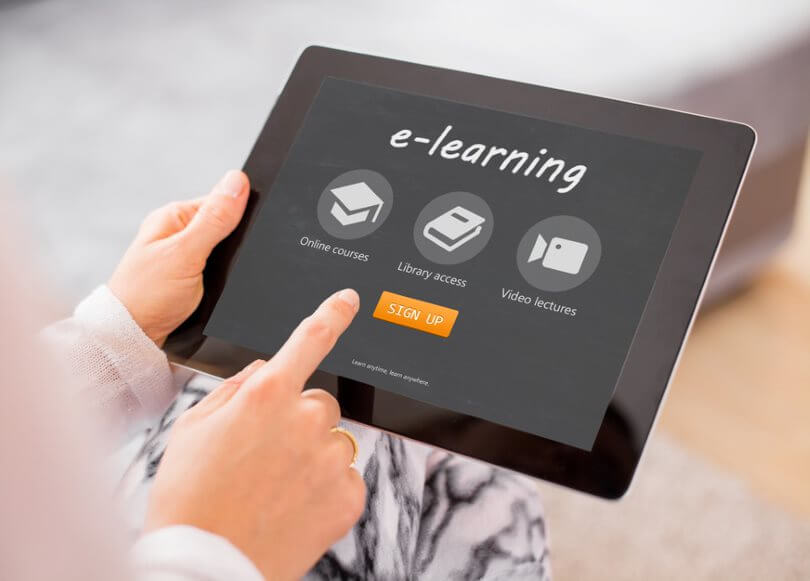As the new school session reopens, children smell their new books, try their uniforms and wait to share summer shenanigans with their friends and peers.
Not this time though. With the global pandemic, the new school session will be different. Mobile phones, tablets, and laptops have turned many students’ homes into classrooms, while for others, the new session may not begin until the physical spaces called schools, reopen.
Unfortunately, the recent announcement of the fifth tranche of economic relief package did not offer any solace for the latter. On May 17, the finance minister, Nirmala Sitharaman, announced PM e-Vidya scheme, which will allow multi-mode access to online education. It focusses on a range of measures, including mobile applications, TV channels, community radio and podcasts.
The government claims it will benefit 25 crore school students and 3.7 crore students enrolled in higher education. But before we hail digital education as the new panacea for all ills, we must realise the scheme assumes access to smartphones, internet and DTH connection.
India is a country where 24% of the population own a smartphone, and only 15% of the rural population has access to the internet and the number of DTH subscribers stands at merely 69.3 million, points out L Silver in an article titled Smartphone Ownership Is Growing Rapidly Around the World, but Not Always Equally.
The new PM e-Vidya scheme has failed to include the needs of the marginalised, rural and economically backward communities into their narrative of the new ‘Aatmanirbhar’ Indian.
Even with the population that has access to the internet and smartphone, the PM e-Vidya scheme excludes them piece by piece. Under ‘One Nation, One Platform’, the government promoted DIKSHA application to access e-learning content available in 14 languages. The ground reality is India has 47 languages as a medium of instruction, points out R Meganathan in a study entitled Medium of Instruction in School Education in India: The policy, status and the demand for English medium education.
It prompts the question: why have we left many students behind during the global pandemic? To include students who do not have access to the internet and smartphones, the government launched the ‘One Class, One Channel’ initiative where each class from Grade 1 to 12 will get a dedicated channel.
For the new DTH channels, the government had asked NCERT to work on the content. However, what remains unclear is the role of state boards in the initiative. Will the states have the freedom to develop content or will they broadcast centralised curriculum from NCERT? Besides, learning is not a one-way process and with lectures beaming out of screens, it is also unclear how teachers will monitor and evaluate students’ learning.
One strand of the scheme focuses on increasing penetration by extensive use of community radios and podcasts. The only podcast that exists is Shiksha Vani, which has CBSE content for grade 9-12. Without clear guidelines on the use of 289 community radio channels, and training teachers on using them, it adds little value to provide personalised learning.
Special e-content is developed for visually impaired and deaf students on Digitally Accessible Information System (DAISY) and in sign language on NIOS website/YouTube. The state of students with disabilities was dire before COVID-19 and it is unlikely to change with digital content available. Visual and hearing-impaired students are only less than half of the differently-abled community, points out NCERT’s Eighth All India Education Survey.
Education for the differently-abled is much more nuanced than making e-learning available and a top-down approach will not solve it.
The e-Vidya scheme can have a bigger impact if it decentralises its implementation, allowing states and districts to curate content for DIKSHA, community radios and TV channels.
The government should also consider supplementing it with SMS-based or Interactive Voice Response (IVR) -based learning to include students with low or no-tech abilities.
These tools will give the power back into teachers’ hands who knows each student best, allowing them to differentiate learning. The education departments should also plan for distributing free textbooks through ration shops, since 68% of parents in Delhi said they want textbooks to accompany online learning, according to a media report.
However, the customers, in this case, are India’s children and their needs come before any Math or Science lessons. Teachers have always played the role of secondary caregivers in a child’s life and right now have the important responsibility of ensuring the socio-emotional wellbeing of their wards.
At the moment though, government school teachers are unable to connect with their students even through an ordinary phone call, simply because they do not have access to their students’ database. Getting teachers, the contact information of their students will not only help them connect to make them feel safe but also increase their network to enrol them in WhatsApp or SMS groups.
E-Vidya scheme ends when the school opens, but what happens next? With a shorter academic year and a longer gap in studies for children excluded through e-Vidya, it is time to think about how best to help students’ rapid learning recovery?
There is a long time before India moves fully online, but even with technological augmentations in the learning landscape, it is important to train teachers and equip them with skills to deal with the new demands of the new normal.
Read more: States Should Follow Karnataka in Land Reforms, Opposition is Unfounded
Post Disclaimer
The opinions expressed in this essay are those of the authors. They do not purport to reflect the opinions or views of CCS.






